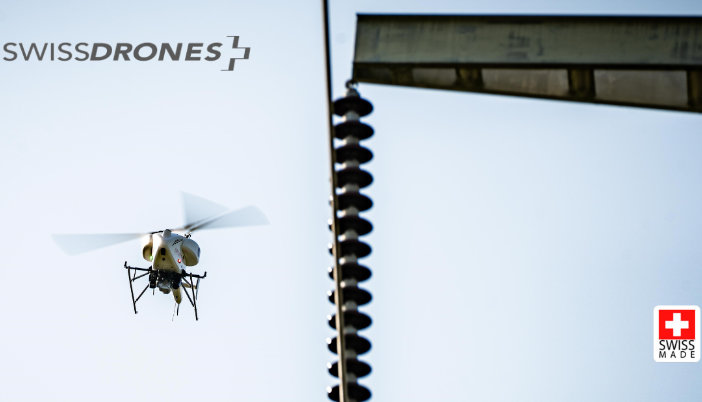Phoenix Air Unmanned (PAU), a US aerial drone services provider, received a first-of-its-kind authorization from the FAA to perform inspection, patrol, and survey BVLOS operations across the entire United States using SwissDrones’ SDO 50 V2 UAV. This authorization sets a precedent for other organizations utilizing the SDO 50 V2 to pursue BVLOS approvals for their commercial operations.
Designed to replace manned helicopters and minimize risks, the SDO 50 V2 is a twin-rotor UAV with an autonomy of over 3 hours, and a payload capacity between 30 and 70 pounds. According to SwissDrones, nearly ten times the endurance and three times the lift capacity compared to aircraft weighing under 55 pounds that operate under Part 107 waivers, allowing BVLOS inspections. Compared to manned aircraft, the SDO reduces operations costs by 70%, and CO2 emissions by up to 95%. Transportable by van, and deployable by a team of two in 15 minutes, the SDO flies at a speed of 45 mph and up to a range of 62 miles. The drone is ready for inspection & monitoring, search & rescue, and aerial surveillance operations.
Having started their partnership three years ago, SwissDrones and PAU conducted numerous flight trials in the United States with the SDO 50 V2. In cooperation with the FAA, these flights met all regulatory and safety requirements to enable extended-range inspection and patrol flights over linear infrastructure under the same regulations as traditional, crewed aircraft.
"This unprecedented authorization empowers us to conduct BVLOS operations for utilities nationwide," stated Will Lovett, Managing Director of PAU. "The SwissDrones SDO 50 V2 represents a game-changing advancement for our operations and clients in the Utility and Energy space, providing advanced sensor packages and an endurance capacity far surpassing what was previously available in the commercial market. It offers a safer, more efficient, and cost-effective alternative to traditional infrastructure inspection methods."
PAU has extensive practice and knowledge of BVLOS operations. Last year, the company completed 13,000 miles of BVLOS Utility Inspections under Xcel Energy’s 2019 BVLOS waiver authorizing a UAV operational area spanning 18,000 miles of Xcel Energy transmission infrastructure. Using two Phase One IXM-100 cameras, the company captured over 3 million 100-megapixel photographs since the program started.
“What was once a few miles of inspections a day has grown to an average of 40 miles per day, with the highest being 124 miles by a single aircraft and crew,” Lovett said. “Much of the utility industry continues to wait on the FAA to open regulations that would provide this level of efficiency, but this is a program that has been on the leading edge of regulatory approvals since 2018.”
PAU intends to use SwissDrones’ SDO UAV for various data-gathering tasks, where inspection flights may span distances exceeding 60 miles depending on the specific sensor package and operating area. This allows PAU to conduct multiple inspections efficiently within a single flight.
Other than securing this FAA BVLOS authorization, SwissDrones has received a Special Airworthiness Certificate (SAC-EC) from the FAA for the SDO 50 V2. SwissDrones is also one of the first organizations to obtain the European Union Aviation Safety Agency (EASA) Light UAS Operator Certificate (LUC), granting the possibility to start operations in the specific category without needing operational authorization by the NAA across EASA countries.




.png.small.400x400.png)











Comments